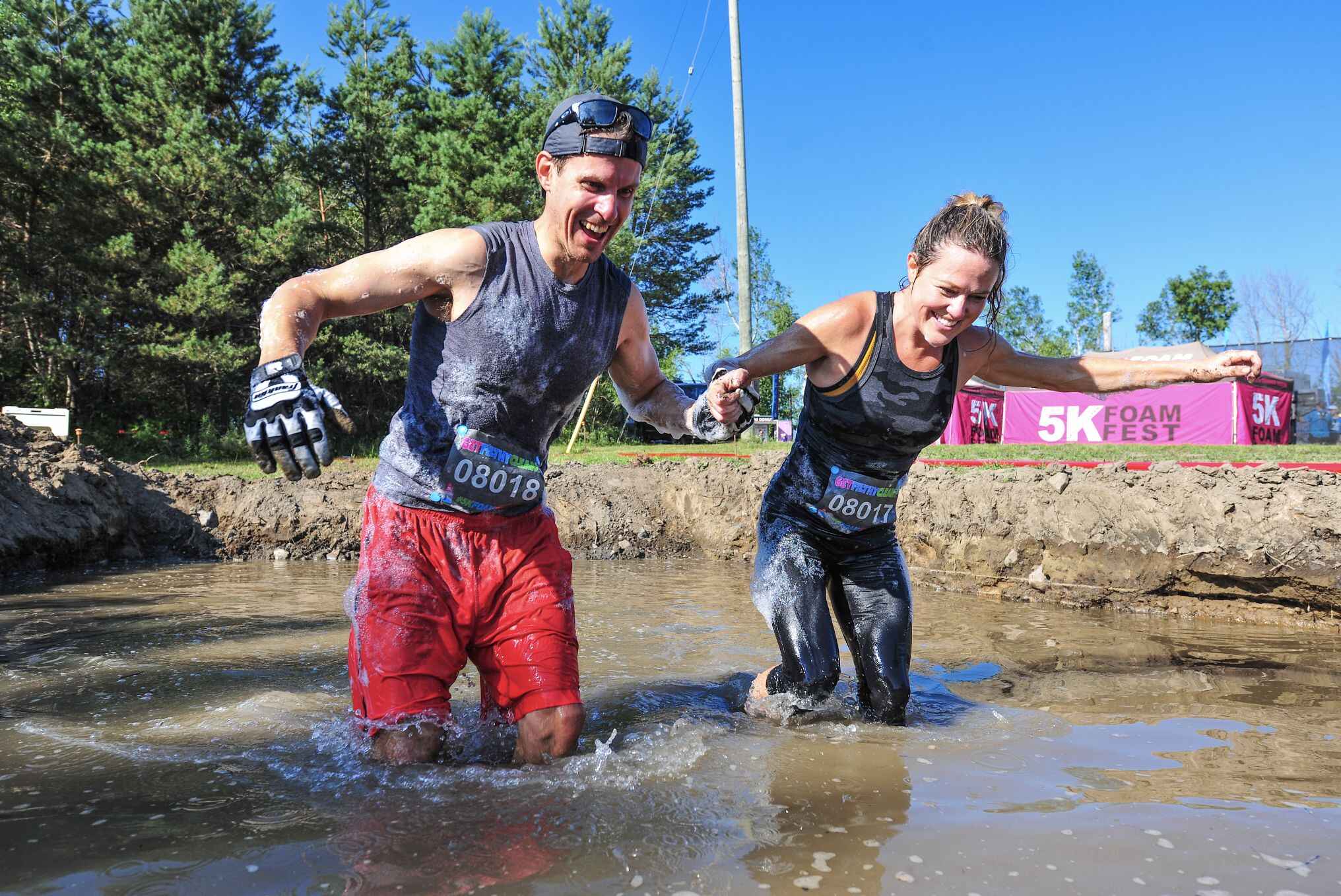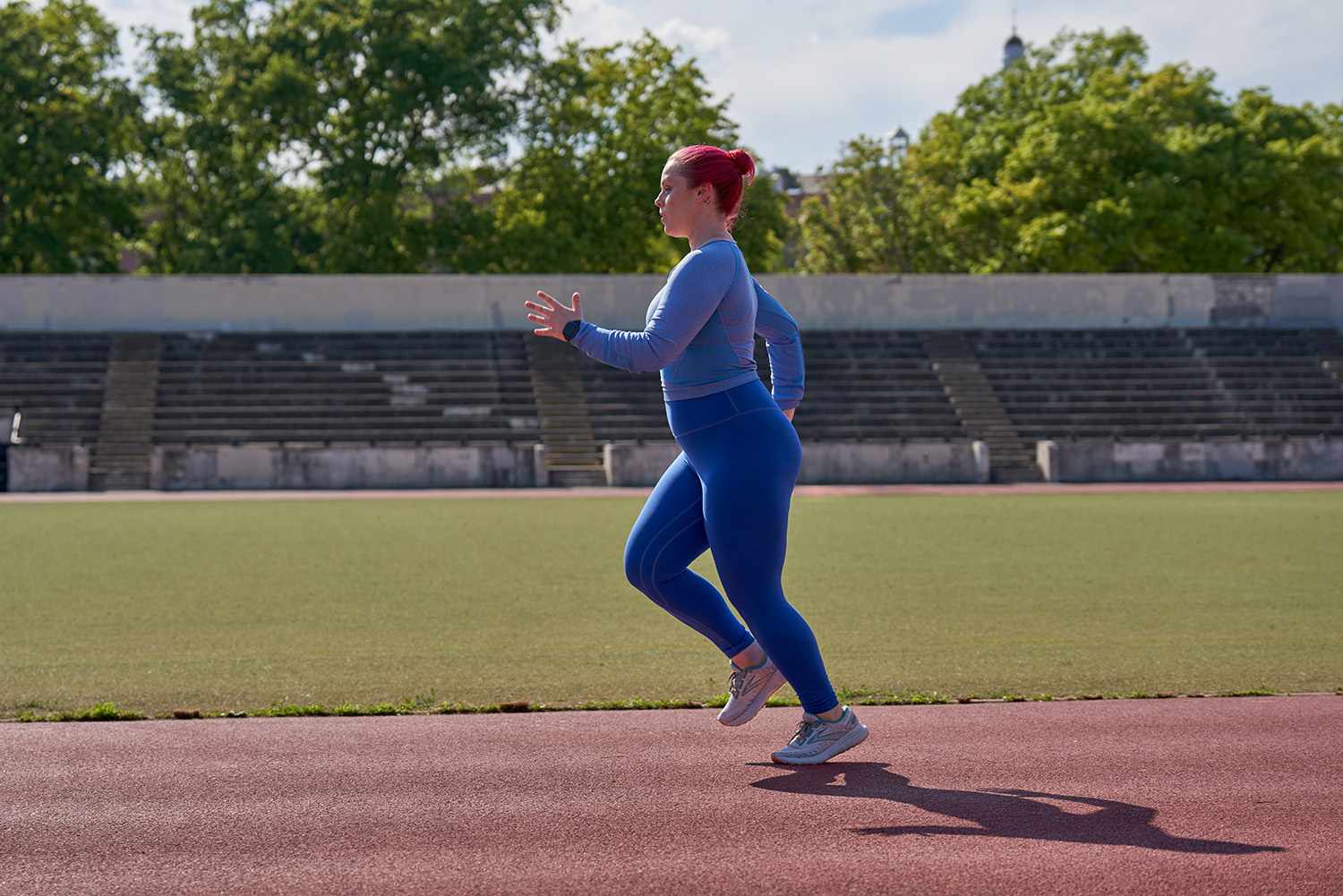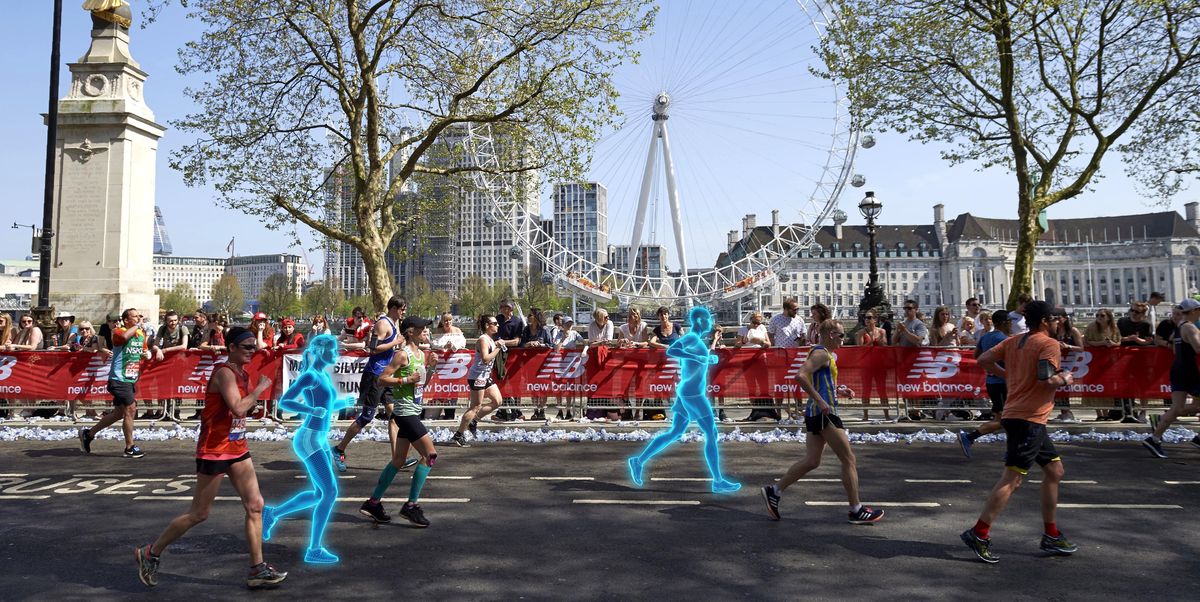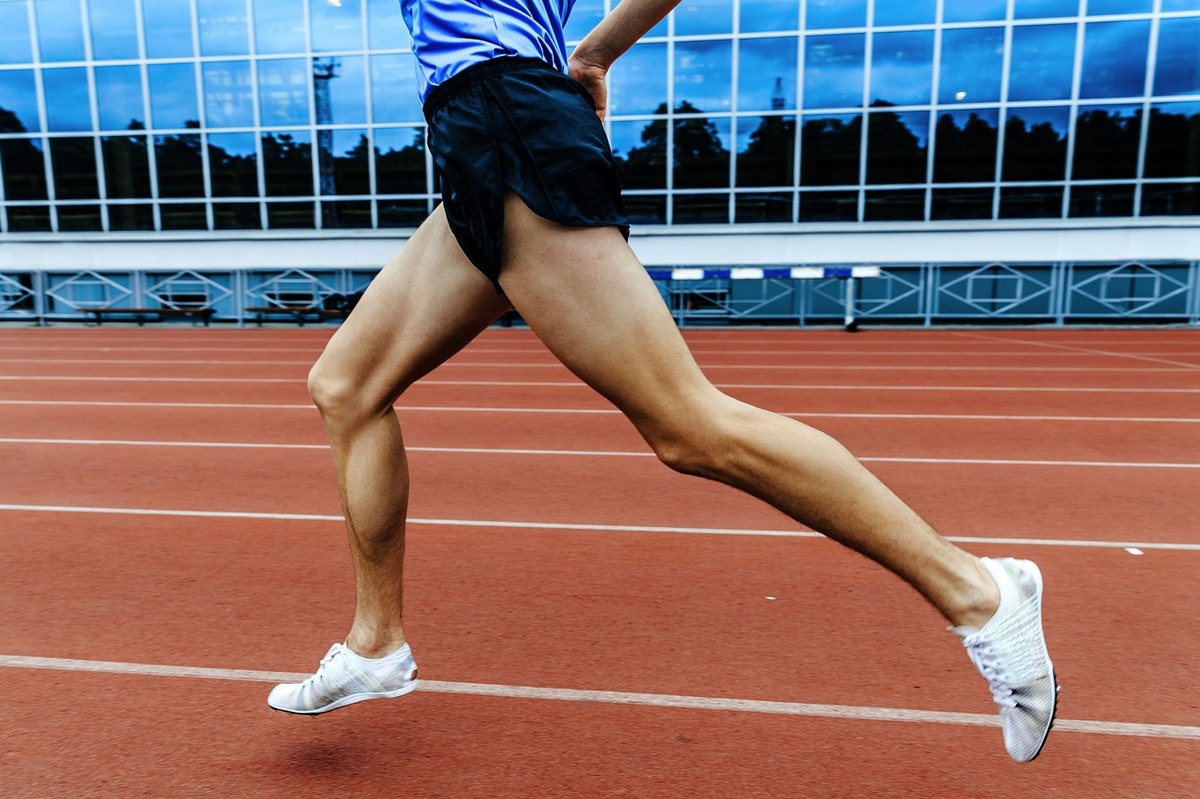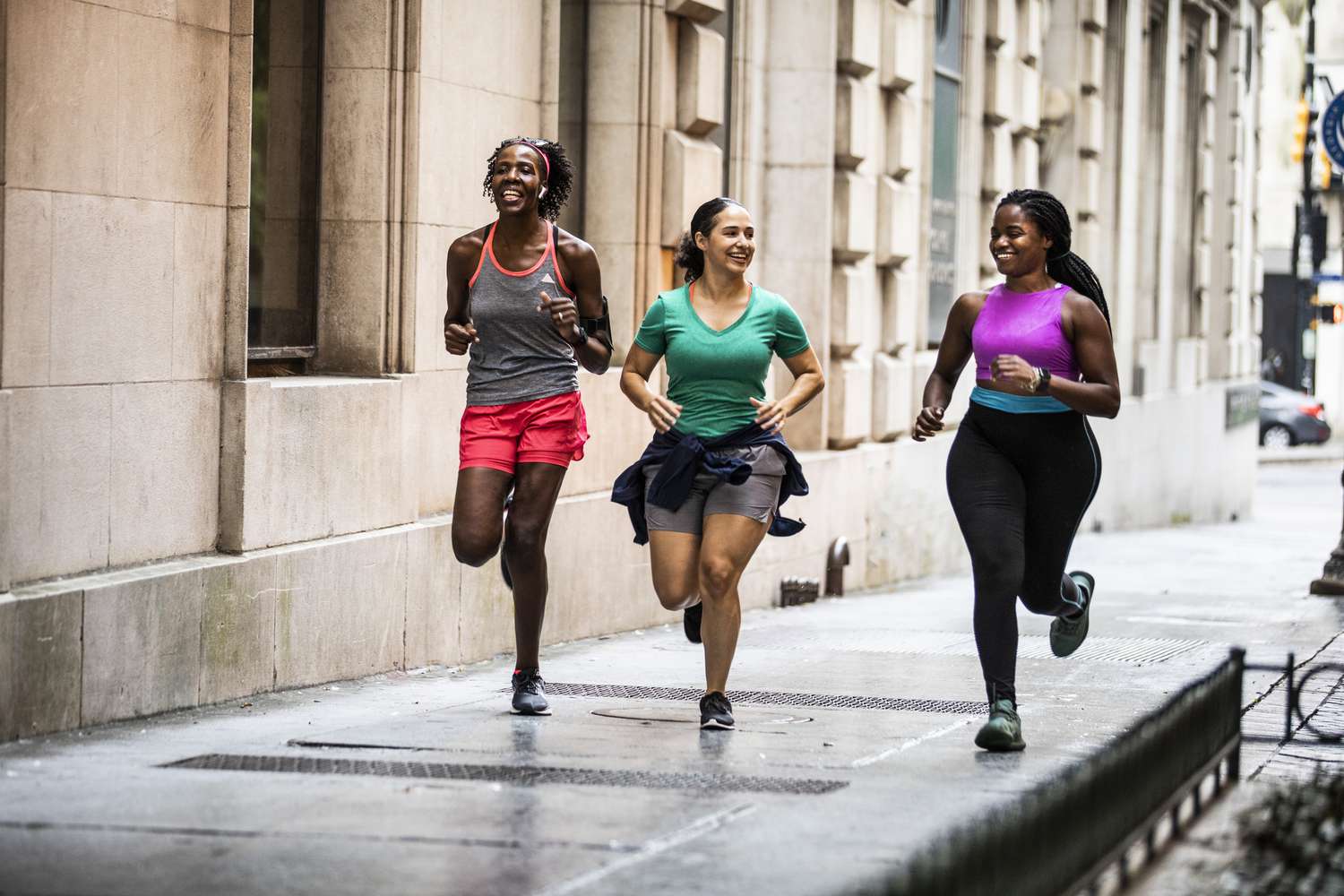

Featured
How Long Does 5K Run Take
Modified: January 2, 2024
Discover how long it takes to complete a 5K run and get featured in our comprehensive guide. Plan your race strategy and achieve your running goals.
Introduction
Welcome to the world of running! Whether you’re a seasoned athlete or just beginning your fitness journey, the 5K run is an excellent challenge that can be enjoyed by people of all ages and abilities. The 5K, which stands for 5 kilometers or approximately 3.1 miles, has become one of the most popular race distances around the globe.
Participating in a 5K run offers numerous benefits, ranging from improved cardiovascular health and endurance to the sheer joy of accomplishing a personal goal. However, one common question that arises is, “How long does a 5K run take?” Well, the duration of a 5K run varies greatly depending on various factors such as fitness level, terrain, weather conditions, and personal goals.
Whether your objective is to complete the course in record time or simply to complete the distance, this article will guide you through the intricacies of the 5K run and provide valuable insights into factors that can impact your run time. Furthermore, we will explore effective training strategies to help you achieve a faster 5K, as well as share tips to ensure a successful and enjoyable race experience.
So, if you’re ready to lace up your shoes and hit the pavement, let’s dive into the world of the 5K run and discover just how exhilarating this distance can be!
Understanding the 5K Run
Before we delve into the factors that can affect your 5K run time and how to train for a faster run, let’s first understand what exactly a 5K run entails. As mentioned earlier, a 5K run covers a distance of 5 kilometers, or approximately 3.1 miles. It is a popular racing distance for both experienced runners seeking to push their limits and beginners looking to challenge themselves.
The 5K run is often referred to as a “gateway” race, as it provides an entry point into the world of distance running. Many people use the 5K as a stepping stone to progress to longer distances, such as 10Ks, half marathons, and marathons. However, the 5K race itself should not be underestimated, as it requires a balance of speed, endurance, and mental fortitude.
One of the main attractions of the 5K run is its accessibility. Unlike longer races, such as marathons, the 5K distance allows participants to complete the run in a relatively short period of time. This makes it an ideal option for busy individuals who may have limited training time or prefer shorter bursts of intense exercise.
Furthermore, 5K runs are often organized as community events or charity fundraisers, fostering a sense of camaraderie and support among participants. Whether you’re running solo or with a group, the atmosphere at these races is usually filled with excitement, energy, and encouragement, creating a memorable experience for all involved.
It’s important to note that the terrain of a 5K course can vary significantly, which can impact the level of difficulty and overall run time. Some races take place on flat, paved roads, while others incorporate hills or off-road trails. The type of terrain you’ll encounter during a 5K run can influence your pacing strategy and require specific training adaptations.
Now that we have a solid foundation of what the 5K run entails, let’s explore the different factors that can affect your 5K run time and how to optimize your training for a faster performance.
Factors Affecting 5K Run Time
When it comes to the 5K run, there are several factors that can influence your overall run time. Understanding these factors can help you set realistic goals and make informed decisions about your training and race strategy. Let’s explore some of the main factors that can impact your 5K run time:
- Fitness Level: Your current fitness level plays a significant role in determining your 5K run time. Individuals who have a higher level of cardiovascular fitness, muscle strength, and endurance will generally be able to complete the distance at a faster pace. Regular training and conditioning can improve your fitness level, enabling you to run faster and more efficiently.
- Terrain: The type of terrain you’re running on can greatly affect your run time. Flat, smooth surfaces like pavement or a track tend to be faster, as they allow for a more even stride and reduced energy expenditure. On the other hand, hilly or uneven terrain can slow you down and require more effort. It’s important to consider the elevation changes and surface conditions of the course when estimating your run time.
- Weather Conditions: Weather conditions, such as temperature, humidity, wind, and precipitation, can impact your 5K run time. Extreme heat and humidity can make running more challenging, as they increase your perceived exertion and can lead to dehydration. Similarly, strong winds can affect your running pace, especially if you’re running against the wind. Pay attention to the weather forecast and adjust your race strategy accordingly.
- Pacing Strategy: How you pace yourself during a 5K run can significantly impact your overall run time. Starting too fast can lead to early fatigue and a slower performance in the later stages of the race. Conversely, starting too slow can prevent you from achieving your full potential. Finding the right balance and maintaining a consistent pace throughout the race is key. Some runners prefer to start conservatively and gradually increase their speed, while others may opt for a more aggressive approach. Experiment with different pacing strategies during your training to determine what works best for you.
- Mental Focus: The mental aspect of running should not be underestimated. Your mindset and mental fortitude can influence your 5K run time. Staying focused, maintaining a positive attitude, and pushing through discomfort or fatigue can make a significant difference in your performance. Developing mental strategies, such as visualization techniques or positive self-talk, can help you stay mentally strong during the race.
These are just a few of the many factors that can impact your 5K run time. It’s important to consider each of these factors and tailor your training and race strategy accordingly. By understanding these influences, you can work towards improving your performance and achieving your personal goals in the 5K run.
Training for a Faster 5K Run
If you’re aiming to improve your 5K run time and achieve a faster performance, a structured training plan is essential. By incorporating specific workouts and training techniques into your routine, you can enhance your speed, endurance, and overall running efficiency. Here are some key strategies to consider when training for a faster 5K run:
- Interval Training: Interval training involves alternating between periods of high-intensity running and active recovery. This type of training is highly effective for improving speed and increasing cardiovascular fitness. Incorporate intervals into your training by running at a faster pace for a set distance or time, followed by a slower recovery period. Gradually increase the duration and intensity of the intervals as your fitness improves.
- Tempo Runs: Tempo runs are sustained efforts at a comfortably hard pace, typically at or slightly below your lactate threshold. These runs help improve your aerobic capacity and teach your body to maintain a faster pace over longer distances. Start with shorter tempo runs and gradually increase the duration as you build your fitness. Aim to maintain a steady and controlled pace throughout the entire run.
- Hill Repeats: Incorporating hill repeats into your training can help improve your leg strength, power, and overall running economy. Find a hill with a moderate incline and sprint up the hill, focusing on maintaining proper form. Jog or walk back down the hill for recovery before repeating the effort. Gradually increase the number of hill repeats as your strength improves.
- Strength Training: Don’t neglect strength training when training for a faster 5K run. Building strength in your lower body can improve your running economy and help prevent injuries. Include exercises such as squats, lunges, calf raises, and glute bridges in your routine. Additionally, core exercises can enhance your stability and improve your running posture.
- Rest and Recovery: Giving your body adequate rest and recovery is just as important as the training itself. Incorporate rest days into your training schedule to allow your muscles to repair and adapt. Additionally, prioritize quality sleep, proper nutrition, and hydration to support optimal performance.
Remember, consistency is key when it comes to training for a faster 5K run. Gradually increase the intensity and volume of your workouts, but listen to your body and avoid overtraining. It’s important to find the right balance between pushing yourself and allowing for proper recovery.
Working with a running coach or joining a local running group can also provide valuable guidance, support, and accountability throughout your training journey. These resources can offer personalized training plans, professional advice, and a community of like-minded individuals who can share their experiences and motivate you along the way.
By incorporating these training strategies into your routine and staying dedicated to your goals, you can improve your speed, endurance, and ultimately achieve a faster 5K run.
Tips for Completing a 5K Run
Preparing for and completing a 5K run can be a rewarding experience. Whether it’s your first 5K or you’re looking to improve your previous performance, here are some helpful tips to ensure a successful and enjoyable race:
- Set Realistic Goals: Before the race, set realistic goals based on your current fitness level and training progress. This will help you stay motivated and focused during the race.
- Follow a Training Plan: Stick to a structured training plan that gradually increases your mileage and incorporates different types of workouts to improve your speed and endurance.
- Warm Up Properly: Prior to the race, warm up your muscles with dynamic stretches, light jogging, and strides to prepare your body for the exertion to come.
- Pace Yourself: Start the race conservatively and gradually increase your speed if you feel comfortable. It’s better to finish strong than to start too fast and burn out early.
- Stay Hydrated: Drink water or sports drinks before, during, and after the race to stay hydrated. Take advantage of water stations along the course if available.
- Focus on Proper Form: Maintain good running form throughout the race. Keep your posture upright, shoulders relaxed, and arms swinging naturally. Avoid overstriding and maintain a cadence that feels comfortable.
- Listen to Your Body: Pay attention to any pain or discomfort during the race. If you experience sharp or persistent pain, it’s important to slow down or stop and seek medical assistance if needed.
- Utilize Mental Strategies: Stay mentally focused and positive during the race. Use visualization techniques, positive self-talk, or focus on specific landmarks or runners to keep your mind engaged.
- Enjoy the Experience: Remember to enjoy the race and celebrate your achievement, whether it’s a personal record or simply completing the distance. Cheer on other runners and soak in the energy of the event.
- Recover Properly: After the race, cool down with some light jogging or walking and perform static stretches to aid in muscle recovery. Refuel your body with a nutritious meal or snack to replenish your energy stores.
Remember, the most important aspect of completing a 5K run is to have fun and enjoy the experience. Embrace the challenges, celebrate your progress, and use it as a stepping stone to further fitness goals. With dedication, training, and these helpful tips, you can conquer the 5K distance and achieve a memorable race experience.
Conclusion
The 5K run is a popular race distance that provides a range of benefits, from improved fitness and endurance to the sense of accomplishment that comes with finishing a race. Throughout this article, we have explored the various aspects of the 5K run, including understanding the distance, factors that affect run time, training strategies for a faster performance, and tips for successfully completing a 5K run.
By understanding the factors that influence run time, such as fitness level, terrain, weather conditions, pacing strategy, and mental focus, you can set realistic goals and make informed decisions about your training and race strategy. Training for a faster 5K requires a combination of interval training, tempo runs, hill repeats, strength training, and proper rest and recovery. Consistency, dedication, and listening to your body are key components of an effective training plan.
When it comes to completing a 5K run, setting realistic goals, following a training plan, warming up properly, pacing yourself, staying hydrated, and maintaining proper form are essential. Utilizing mental strategies, such as visualization techniques and positive self-talk, can also help you stay focused and motivated throughout the race. Remember to enjoy the experience, celebrate your achievements, and prioritize proper recovery after the race.
Whether you’re a beginner looking to take on your first 5K or an experienced runner striving for a personal best, the 5K run offers a rewarding and challenging experience. Embrace the journey, push your limits, and savor the joy of crossing the finish line. With proper preparation, training, and a positive mindset, you have the power to excel in the 5K run and achieve your running goals.
